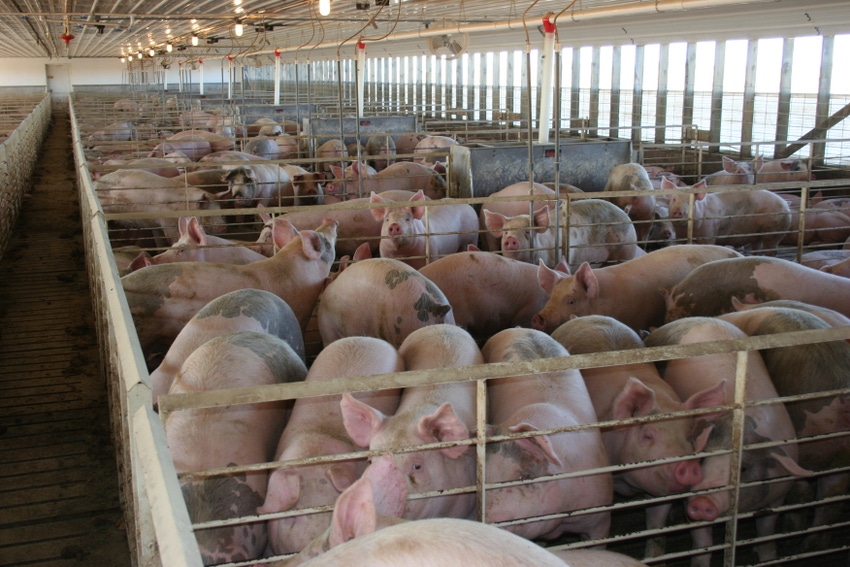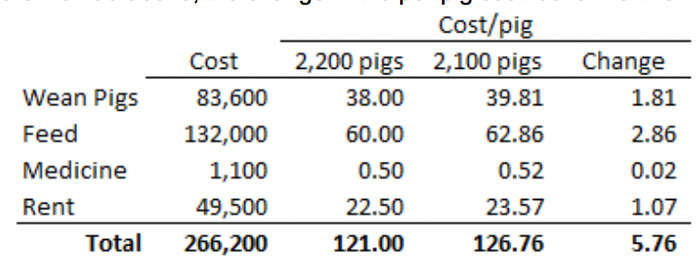
Since our last blog post a lot has happened: COVID-19, social distancing, tax filing and payment deadline extensions, and payroll protection programs, to name a few. So let’s catch up.
If you recall, we walked through the inventory accounting process for a turn in a confinement building. As I am a man of my word, we will discuss inventory loss and show how it can affect your bottom line.
We are going to use the same parameters for our pigs from the last article in this example:
Direct cost
2,200 weaner pigs @ $38/hd = $83,600
Variable cost
Feed = $60/hd = $132,000
Medicine = $0.50/hd = $1,100
Fixed cost
Rent = six months @ $45/space = $49,500
Total cost = $266,200
Total sales = $267,729
Inventory loss events affect your bottom line in two ways:
Decreases the number of pigs you can sell
Increases inventory cost per pig
Let me explain
Decreasing the number of pigs you can sell is a no-brainer; you can’t sell what you don’t have.
Let’s say that this loss event was a theft, someone ran off with the last two loads of pigs the night before you were going to clear the barn. We lost 100 pigs. By losing those 100 pigs to sell, our total sales decrease from $267,729 to $255,560, decreasing our revenue by $12,169.
The increased inventory cost per pig is more subtle but makes a bad situation worse. No matter what the cost of raising those pigs was, you now have to divide the cost by the number of pigs you are selling, regardless of how many you raised. You have absorbed all of the costs for 2,200 pigs for the past six months but only have the 2,100 pigs to sell.
With the cost structure we had above, the change in the per pig cost looks like this:

Losing pigs the day before you were going to sell them is honestly the worst it can get from a cost per pig perspective. The timing of an inventory loss event will affect your cost per pig due to the variable costs (feed, medicine), since they depend upon the number of pigs you are feeding.
Four scenarios where the loss event takes place at different times in the turn:
Day -1 = Lose 100 pigs before you take delivery, do not have to pay for them
Sow site didn’t have enough wean pigs to send
Day 1 = Lose 100 pigs the day after delivery
Wean pigs had PRRS when you took them
Day 90 = Lose 100 pigs mid-turn
Airflow obstruction/curtain malfunction caused suffocation in a group of pens
Day 179 = Lose 100 pigs before you clear the barn
Theft
Using the same cost structure as before, below is how those scenarios affect your cost per pig:

I highlighted the cost increases to show how timing effects the different areas of our inventory costs. The important thing to remember for all these scenarios is that our divisor for our per pig cost is now the 2,100 that we are selling.
The opinions of the author are not necessarily those of Farm Futures or Farm Progress.
Read more about:
Covid 19About the Author(s)
You May Also Like






